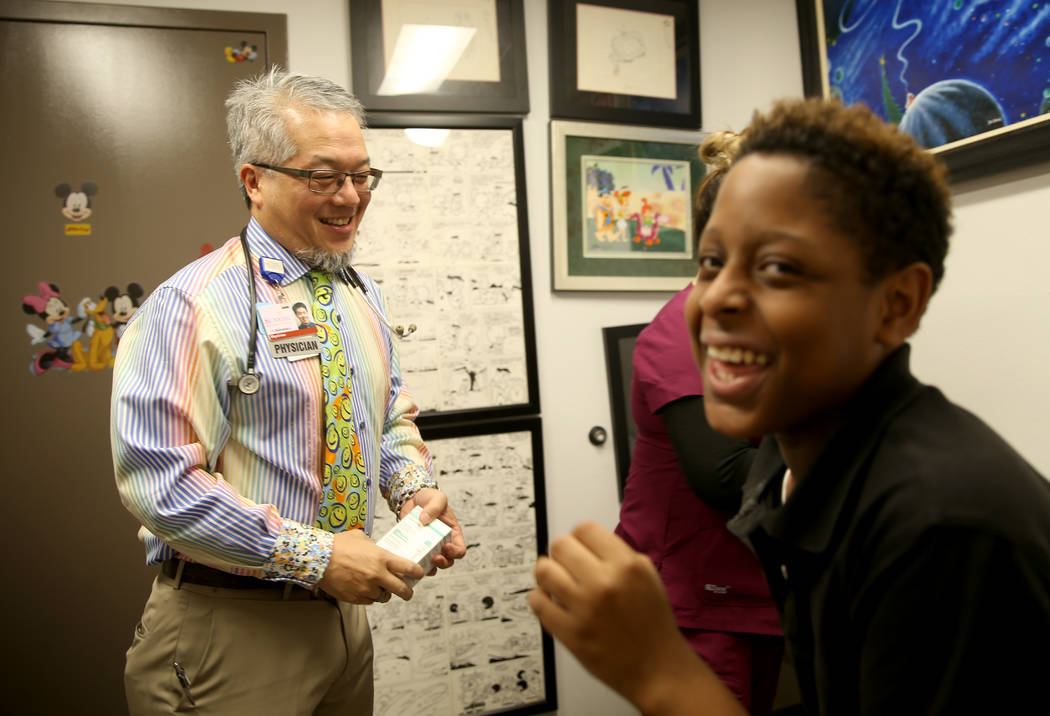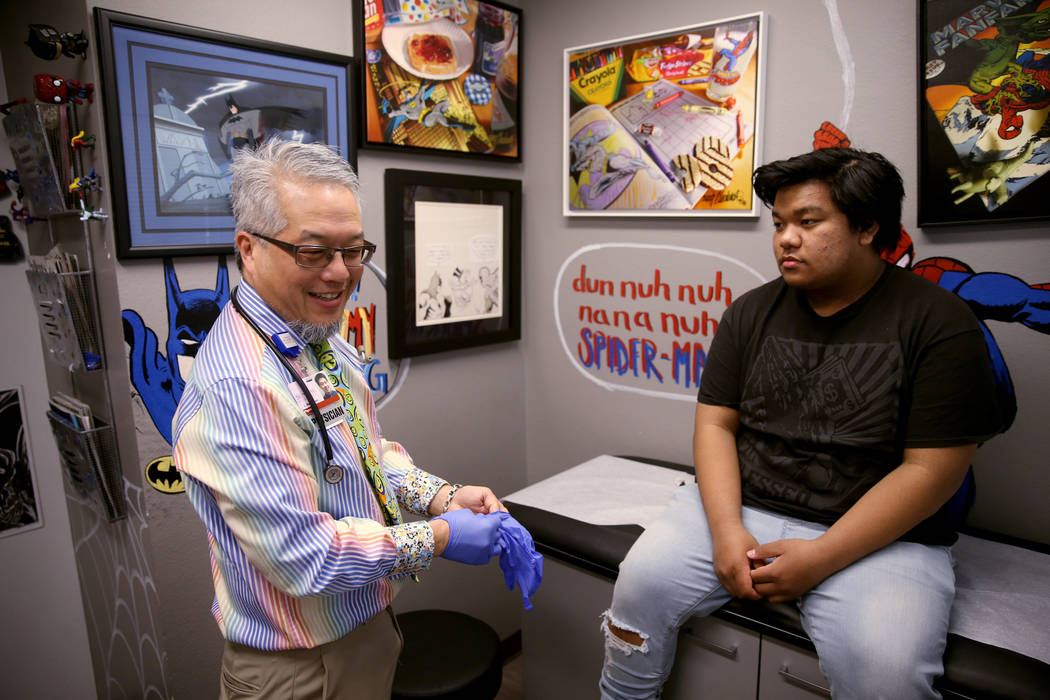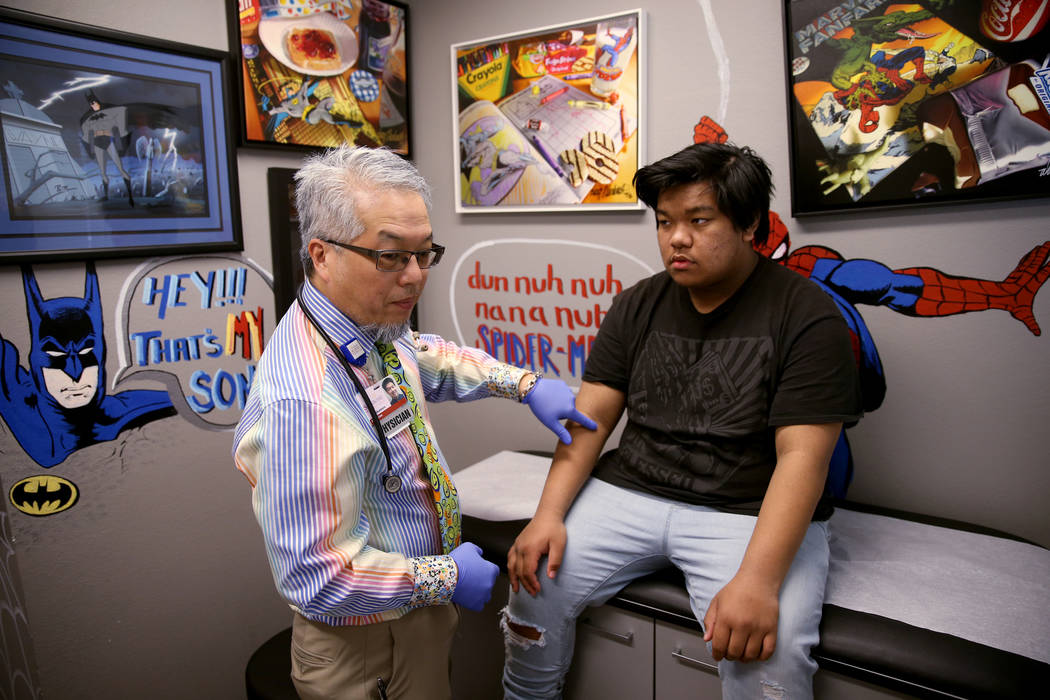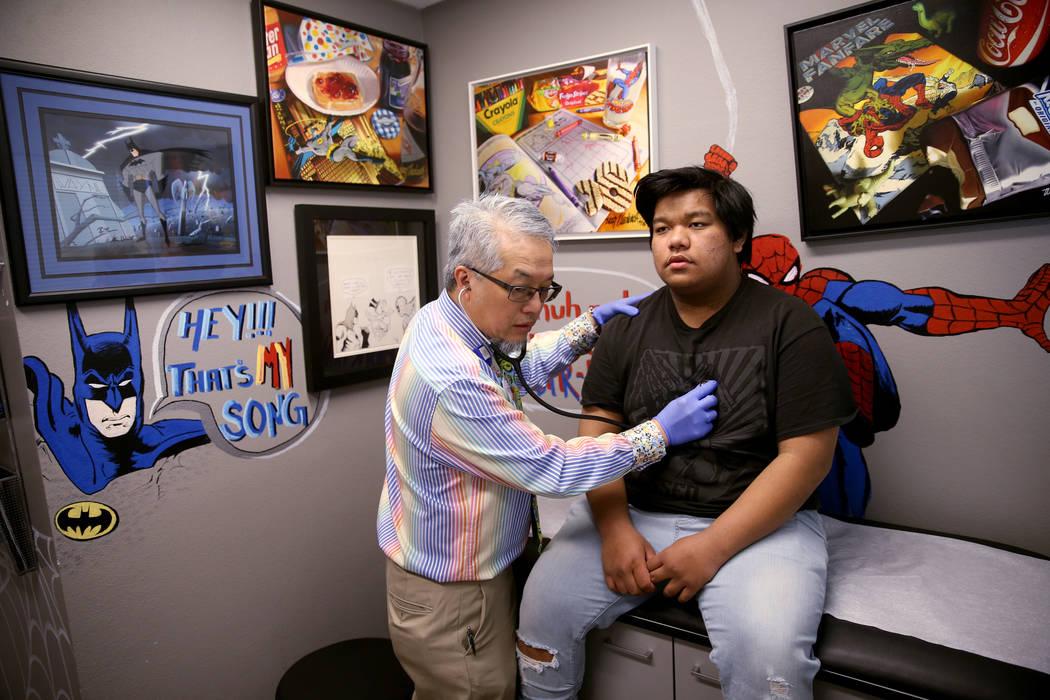‘Five Feet Apart’ movie about cystic fibrosis tackles romance in isolation
Lauren Molasky’s excitement about the upcoming romantic drama “Five Feet Apart” has nothing to do with the fact that she’s a sucker for movies about teenagers who can’t be together, even though they’re totally into each other, and everything to do with the reason why they’re so incompatible.
Both of the lead characters suffer from cystic fibrosis, which is slowly robbing the Las Vegas native of her ability to breathe.
“When it’s bad, it’s really bad,” Molasky says of the condition that affects 30,000 Americans. “On my good days, it still would be probably somebody else’s terrible day, but to me, I feel somewhat stable. I can go out and do some errands. I can kind of live a normal life.”
Cystic fibrosis leads to abnormal salt transport in the lungs and a thickening of the mucus there, explains pulmonologist Dr. Craig Nakamura, director of the CF Center of Southern Nevada. “As a result, you don’t cough up the mucus, it traps bacteria, and it causes recurring infections over time, which eventually leads to permanent damage of the airways and lungs.”
That trapped bacteria festers and can be particularly hazardous, or even fatal, to other CF patients, Nakamura says. “Normally, you and I breathe in bacteria, but our bodies clear it. But they have that thick, sticky mucus that, once the bacteria gets embedded in it, it can kind of take hold, and they don’t get rid of that bacteria. So that same strain of bacteria may be (growing) in a CF patient for decades.”
It’s a cruel twist of fate. The people to whom someone with cystic fibrosis would most relate are the very ones those patients can’t be around. After years of camps, parties and other events designed to bring together children with CF, new information about the risks of cross-infection led to the development of what’s become known as the six-foot rule.
In essence, to prevent the spread of that harmful bacteria, CF patients are advised to remain at least 72 inches apart at all times. If more than one student in a school has CF, it’s recommended that they never use the same bathroom or drinking fountain.
“It’s really unfortunate, because there’s no, like, support groups. You can’t talk to people face to face, because you can’t be by them,” says Molasky, who because of those restrictions never knew anyone else with CF until the rise of social media. “It’s sort of surreal sometimes if you’re at your clinic appointment and they kind of stagger everybody so that nobody walks through the hallway at the same time.”
That isolation serves as the basis for “Five Feet Apart,” the first mainstream movie about the disease, which follows the burgeoning relationship between 17-year-old Stella Grant (Haley Lu Richardson) and fellow CF patient Will Newman (Cole Sprouse, “Riverdale”). The title comes from Stella’s desire to take back one of those feet, considering everything the disease has taken from her.
“They’re telling a story, so certainly there are elements that are not technically, like, to the level of a docudrama accurate,” says Jessica Rowlands, senior director of communications and media relations at the Cystic Fibrosis Foundation. The national organization wasn’t involved in the making of “Five Feet Apart,” which opens Friday, but she and other CF advocates have seen it.
Every case of cystic fibrosis is unique, she says, so while those depicted may not ring true to some patients, the movie is at least creating a discussion. “No matter what, even if it doesn’t reflect someone’s exact experience, I do think it provides just such a window into the types of challenges people with CF face every day, and sort of what the physical and emotional and, to some degree, financial burden is of this illness.”
As for some of those challenges, Molasky takes enzymes whenever she eats, never leaves the house without a nebulizer and recently was upgraded to a home oxygen concentrator. She spends four hours each day on breathing treatments alone.
Every morning, she sends her children, 10-year-old Luca and 7-year-old Ruby, off to those little germ factories known as schools, hoping against hope that they don’t bring home anything that would further compromise her.
After years of relatively good health and few admissions, the Green Valley High School graduate has been hospitalized a dozen times over the past two years, five of those coming in the past seven months, with each one lasting at least a week. She recently was approved to be listed for a lung transplant when that time comes — likely within the next six to 18 months. That decision is all a matter of timing in order to minimize the inherent risks, including organ rejection. “Basically, you need to be sick enough to need a transplant but strong enough to survive it,” Molasky explains.
The health of a patient with cystic fibrosis is so precarious, even going to see “Five Feet Apart” carries a risk.
That’s not going to deter Molasky.
“I just thought of that the other day,” she says. “I’m like, ‘Well, I want to go see it. But, obviously, probably other people with CF are thinking the same thing.’
“But that could be at any given time. I wear a mask for certain things. I wear a mask, obviously, for doctor’s appointments, walking through the hospital, the airport, certain things like that. I don’t wear it at the movie theater, so, you know, for any other movie, I could potentially be sitting by somebody who has CF and not know it.”
Contact Christopher Lawrence at clawrence@reviewjournal.com or 702-380-4567. Follow @life_onthecouch on Twitter.
About Cystic fibrosis
Cystic fibrosis is still the most common fatal genetic disease, says Dr. Craig Nakamura, director of the CF Center of Southern Nevada.
For decades, it was considered a childhood disease because patients rarely survived into adulthood. Today, though, the average life expectancy is 44, and adults outnumber pediatric cases at the local clinic.
About 85 adults and 70 pediatric patients from Southern Nevada, Southern Utah and Northern Arizona are served by the center.
The next closest clinic, at Loma Linda University Medical Center, is some 250 miles away in California.

































